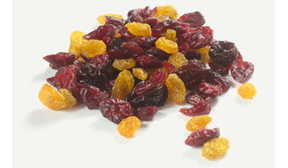 cquisition of Flagstone Foods does more than give TreeHouse Foods entry into the healthy snacks category. It allows the manufacturer of private label products to shift its focus to the perimeter of the retail grocery store.
cquisition of Flagstone Foods does more than give TreeHouse Foods entry into the healthy snacks category. It allows the manufacturer of private label products to shift its focus to the perimeter of the retail grocery store.Flagstone Foods, St. Paul, Minn., is a manufacturer of private label snack products sourced from nuts and dried fruits. The company sells most of its products in the center of the grocery store, but has extended its reach to the perimeter by offering snack mix and trail mix combinations in the fresh produce section.
“Flagstone provides us with a private label portal from center-of-store staples to perimeter-based healthy snacks,” said Sam K. Reed, chairman, president and chief executive officer, in a conference call June 30 to discuss the acquisition. “This portal leads to a private label bridge, linking product category mainstays of the baby boomer generation to the health, wellness, and convenience preferences of millennial consumers. This passage marks the entry of our TreeHouse into the $7 billion realm of healthy snacks that were once an enclave reserved for national brands only.
“In acquiring Flagstone, we have elected to follow consumers, knowing that they will not only lead us to growth, but also to the future. It is the confluence of these consumer trends and grocery developments that not only makes Flagstone so strategically attractive, but also makes the two of us ideal partners. Our combination is uniquely well-suited to pursue opportunities in this rapidly growing mega-category, with product and packaging innovation, retail channel expansion, and dual merchandising in center-of-store and around the perimeter.”
On June 30, TreeHouse agreed to acquire Flagstone Foods for $860 million. The company has two manufacturing plants, one in Minneapolis and the other in Roberson, N.C. In 2013, Flagstone Foods had sales of $697 million, according to TreeHouse Foods.
Dennis Riordan, chief financial officer of TreeHouse, said Flagstone Foods has experienced rapid growth in the past three years at 24% annually. The growth, he said, was driven by innovation and the company’s efforts to partner with retailers and merchandise its healthy snacks along the perimeter of the store.
“ … With regard to the Flagstone record, all of that growth has been organic since the company was formed by combining a snack nuts business and a trail mix business,” Mr. Reed said. “That growth has come largely through the development of a dual product line strategy that allowed for differentiated products to be merchandised around the store perimeter, while their core business in the center of the store actually continued to show very fine growth.”
The center of the store is the larger of Flagstone’s two businesses, Mr. Reed said.
“The perimeter is newer, it’s smaller, and it’s faster growing,” he said. “… That gives Flagstone an opportunity, with really a blank canvas, to work with their individual customers and design product offerings, brand names, package sizes, in particular mixes of nuts and dried fruit, to really establish, not only a proprietary offering for a customer brand, but one that doesn’t have to carve its way into the shelf space by fighting over a static or a fixed amount of shelf space in order to carve out a niche for itself.”
But Mr. Reed is not limiting his vision of Flagstone’s future to traditional grocery outlets.
“While we have a foothold of business in the convenience stores, and a small, but substantial, growing business in drug, I see that this acquisition can leverage both of those two, not only at a higher rate of growth, but an expansion of other categories,” he said.
Mr. Reed added that when his management team began evaluating Flagstone Foods as an acquisition prospect they were concerned, because of the snack maker’s position in the marketplace.
“One of our first observations in looking at the company several months ago was a preliminary concern on the basis of just the raw data about the clear evidence that this company was third in its standing with regard to market share of private label peanuts and commodity-like products,” he said. “When we got into that, we saw that it was consistent with their strategy to use innovation, value-added concepts, convenient packaging, and packaging that would denote or connote more of a health and wellness or natural approach. As we dug into that, we realized that, that third position was not a weakness, but, in fact, a strength of this business.”





